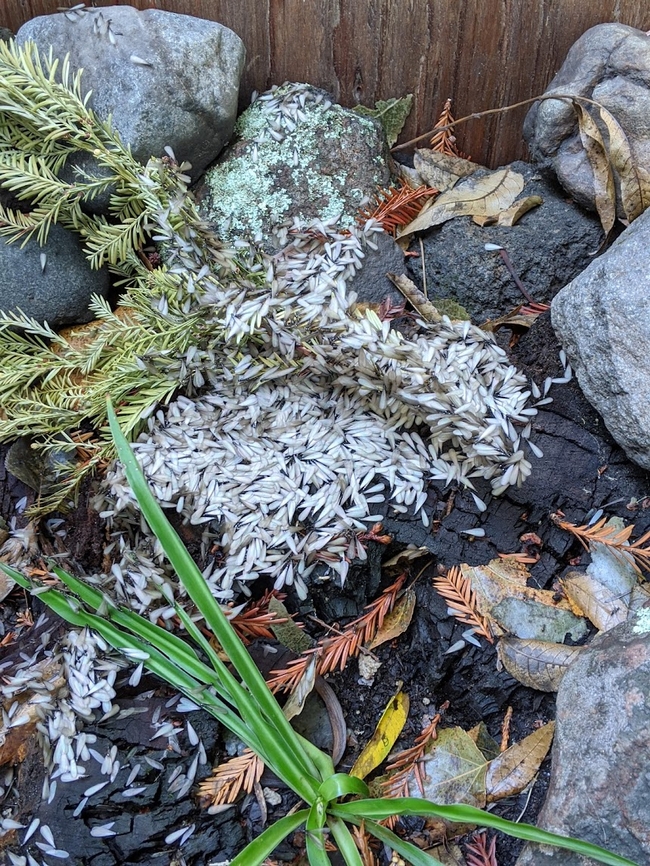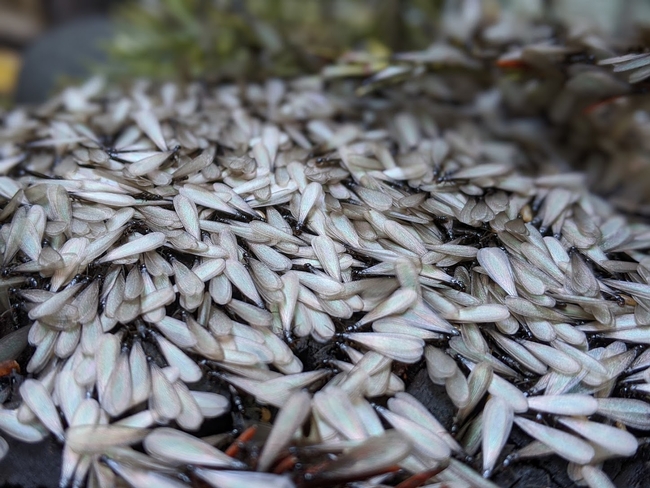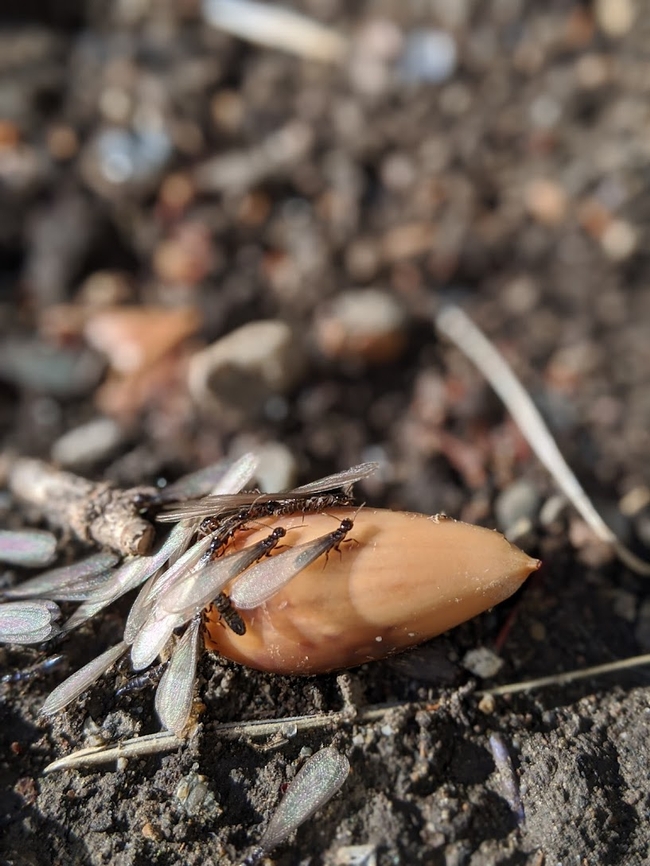It's that time of year again: termite swarm season! Western subterranean termites, Reticulitermes hesperus (species complex), produce reproductive swarms during calm sunny periods immediately following the first autumn rains. This is especially pronounced in the San Francisco Bay Area and parts of the Sacramento Valley, where mature termite colonies across a broad region may swarm simultaneously en masse, filling the air with termites fluttering their gossamer wings and filling social media discussions with wonder, horror, confusion, and dread.

(Credit: C Hubble)
What should you do? If observing a swarm on your property, especially if near your home or other structures, you can hire a professional termite company for a detailed inspection. Make sure to photograph or otherwise note the swarm location so that the inspector can start there. Even if you don't see swarms on your property, regular (every three to five years) inspections will help detect infestations before they cause significant damage and prevent future infestations. There are several proven management strategies for termites; review UC IPM's Pest Notes: Subterranean Termites.
For now, perhaps we can all appreciate the wonder of this natural spectacle. Winged termites are great sources of food for birds, lizards, other insects, and spiders. Termites also provide important ecosystem services, such as decomposition of wood and fallen leaves, contribution to soil structure formation, enhancement of water infiltration in soil, and facilitation of nutrient availability to plants. Furthermore, western subterranean termites are native to California and have been here long before we built wooden structures on top of their colonies. (Termite) love is in the air!
Attached Images:

